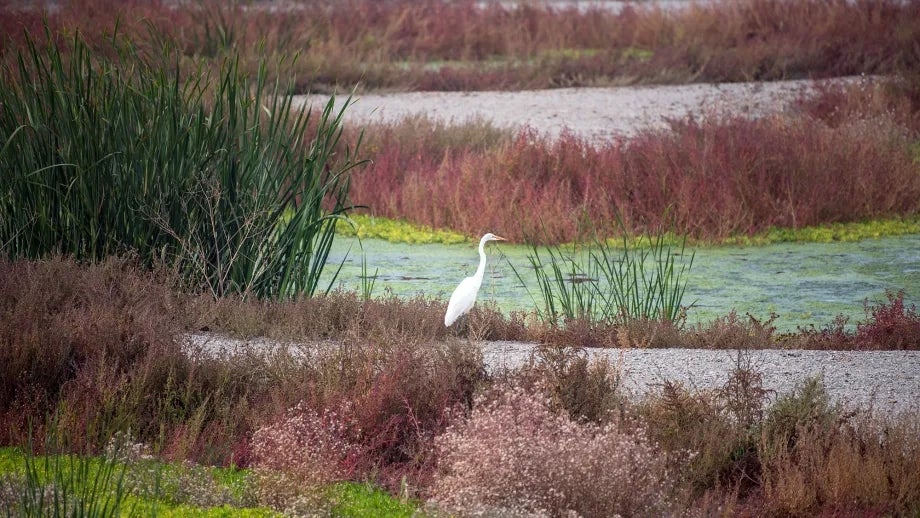Seeking Ideas on the Ingredients for Regional Resilience
Issued in November 2017, the draft Raising the Bar on Regional Resilience Report is a call to action by the Bay Area Regional Collaborative (BARC) and its member agencies to establish a comprehensive regional planning process and an integrated Regional Resilience Plan that prepares the Bay Area for the challenges ahead related to flooding, rising sea levels, seismic events and other hazards and climate change impacts. In this effort, the region must also continue to strengthen partnerships across regional agencies, local jurisdictions, special districts and non-governmental organizations, and with community residents, businesses, designers, builders, academics, health professionals, students and others. These partnerships will be a cornerstone of the work necessary to shore up the metropolitan infrastructure, ensure public safety and well-being, and grow our regional resilience equitably with an explicit regional acknowledgement of the role that race and inequity plays in making some communities more vulnerable than others. BARC is accepting public comments on the draft report until January 15, 2018. Comments can be sent to barcadmin@bayareametro.gov
MTC is one of four regional agencies that work together through BARC. The others are the Association of Bay Area Governments (ABAG), the Bay Area Air Quality Management District (BAAQMD) and the Bay Conservation and Development Commission (BCDC).
View the draft report here.
Submit your comment
In order to receive a reply to your comment, please provide an email address.


I appreciate the efforts MTC is making to protect the bay area from sea level rise. I live in east Corte Madera, in Marin County. We get 3-4 feet of water covering our entire back yard during king tides. My kids could drown in this. I can't let them outside during king tides. But, I did not see any reference to flood risk in eastern Corte Madera in the report. During regular high tides, we get 1-2 feet of water covering a portion of the back yard.
We are not legally able to modify the back yard to prevent flooding due to the fact that the Bay Conservation & Development Commission will not issue a permit for this work since the back yard is adjacent to bay shore. When my grandfather purchased the house in the early 1960's, there was a boat access. We have a boat ramp and dock - neither have been used in over 30 years. This is because the slough needs to be dredged and Marin Audubon opposed the dredging due to impact on the Clapper Rail and Salt Marsh Harvest Mouse. My grandfather worked a hard labor job for decades to save up for a house where he could use his boat to fish. He was angry about the way environmental regulations usurped the rights of property owners until the day he died. Many of our neighbors at that time were also upset and sold their homes.
I consider myself an environmentalist, but I firmly believe that the conservation extremist groups in Marin are preventing successful adaptation to climate change. I commute 1-2 hours via car from East Corte Madera to Alameda for work (each way). I have a boat ramp in my back yard - I could get a hybrid or electric boat and use this for transportation. I could put a bike in the boat and use that after arriving in Alameda.
There are only a few channels around the bay that can accomodate ferries, but we could have fleets of hybrid and electric Uber boats taking people in all directions, all over the bay, if we allowed more dredging along the bay shore. I believe that the grave risk posed by climate change strongly outweighs the biodiversity concerns of conservationists. Preserving species biodiversity in wetland areas will not matter at all when climate change and sea level rise wipes out most species on our planet.
I believe that we need major and serious CEQA reform to allow for successful regional adaptation to climate change and sea level rise. In Marin, the conservation extremist groups have been fighting against bike infrastructure for decades due to vague and unsubstantiated claims about bike infrastructure being bad for endangered animals in Marin. 80% of Marin is open space. Mountain biking routes are bike infrastructure in Marin and mountain biking is the safest and greenest way to travel between east and west Marin. Groups like Marin Audubon also fight against paved bike infrastructure. They have opposed the critical need for widening the Mill Valley - Sausalito bike path, which is heavily used by Marin to SF bike commuters. Narrow paths create too much bike-pedestrian conflict. Marin Audubon is currently opposing adequately wide SMART bike paths in Terra Linda and they are suing the county over the Road & Trails management plan. It is deeply upsetting to me that the "environmental" organizations in Marin fight against bike infrastructure so intensely. If we don't reform CEQA, we must exempt climate change, sea level rise and bike infrastructure projects from CEQA. Nothing will ever get done without change to the CEQA law and/or exempting important climate change projects.